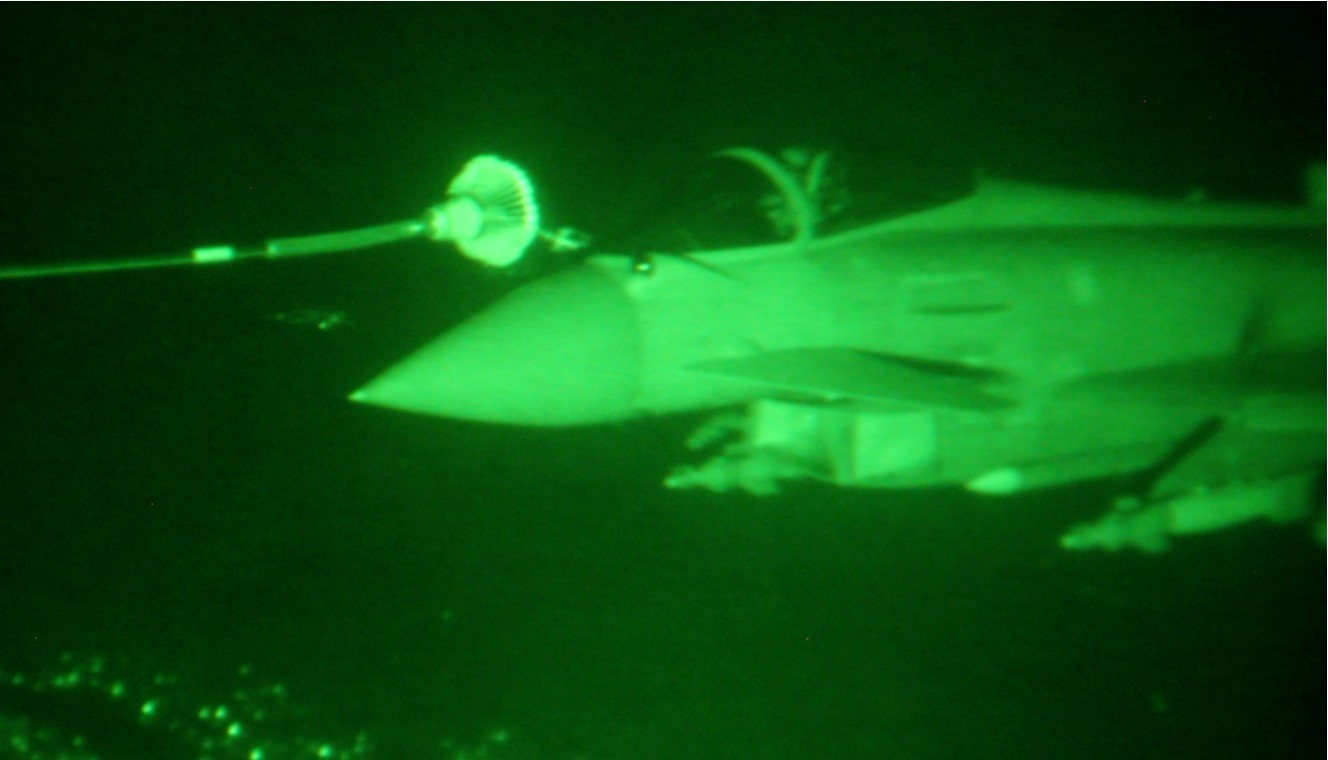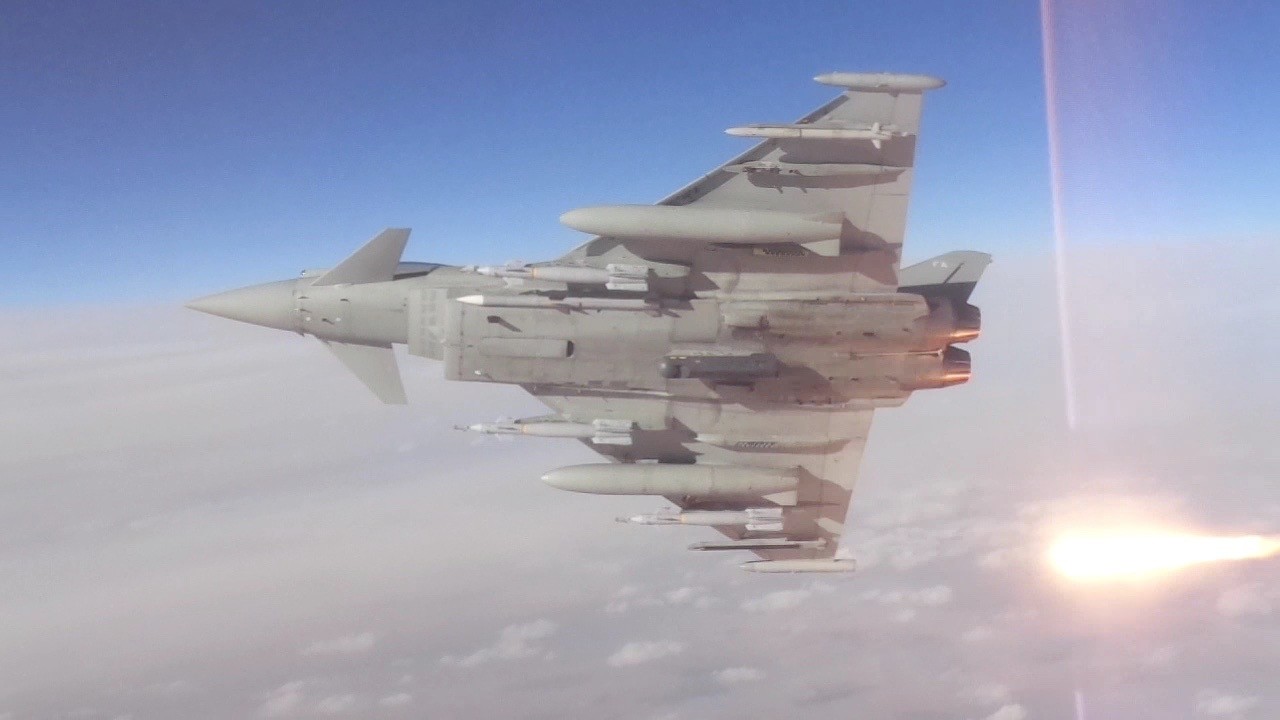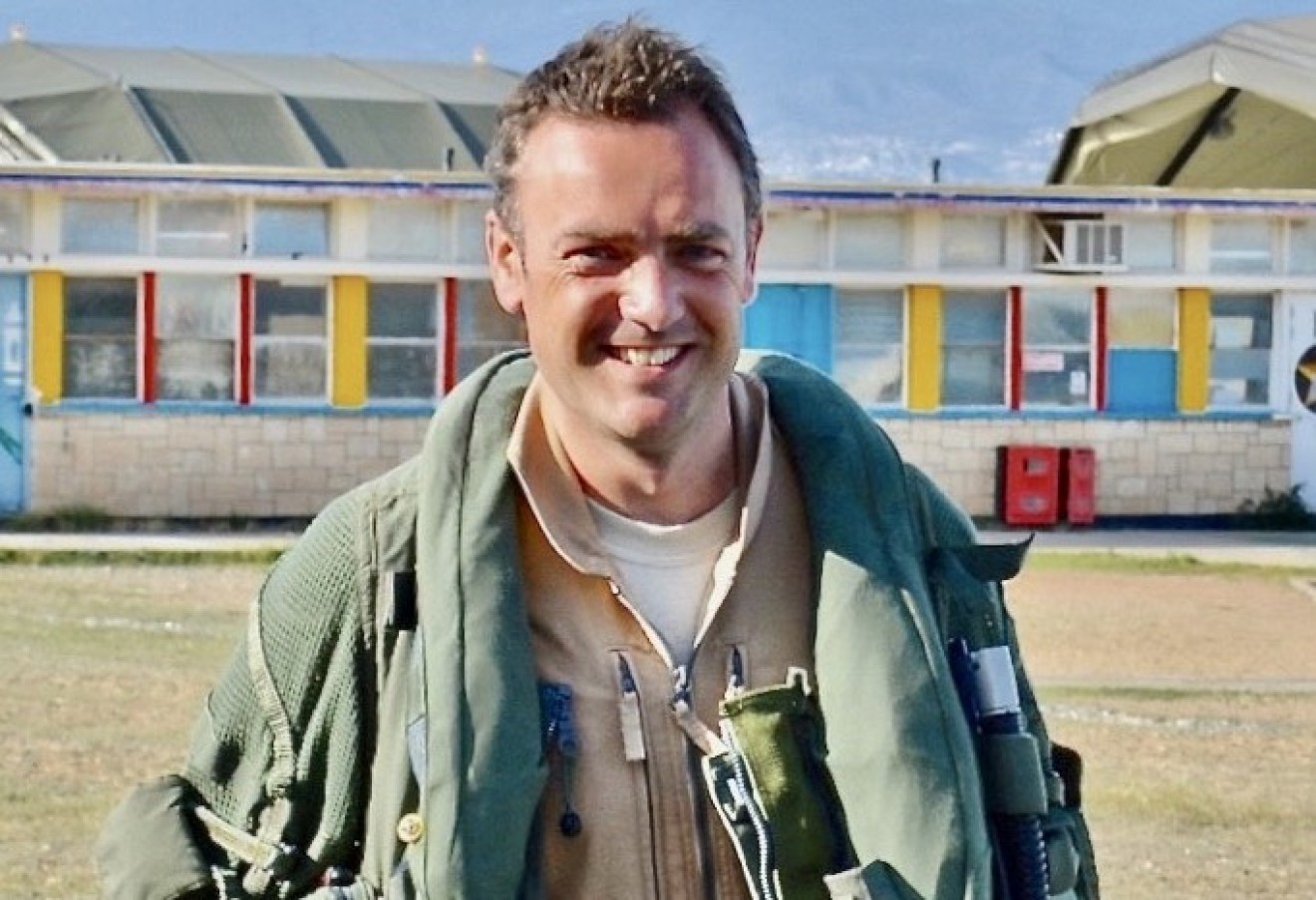John Nichol calls it ‘an adrenaline-fuelled, gripping account that puts you right in the cockpit of one of the RAF's most modern combat aircraft.’ You’ve got a great story to tell — a career that comes of age as a new aircraft does — but what inspired you to write the book? Why did you feel it was important to tell this story?
The situation was so extreme, so unique, that I found it cathartic to write a few notes in a diary at the end of each day. During the COVID lockdown I found the time to start turning the pencil scribbles into something more permanent and the book grew from there.
My aim was to capture the lived experience of life as a modern combat pilot; to give an insight into a hidden world. I wanted the reader to feel the emotions of being strapped into the ejection seat of a fully armed fighter over the battlefield. But more than that: to explore the feelings and realities of that life, not just for the individuals participating, but the huge impact it places on the people closest to them.
Who are your military flying heroes or the people who inspired you?
The entire history of aviation spans a period only a little greater than a lifetime. It is already littered with pioneers and inspirational role models, and it is very difficult to pick from such an illustrious cast.
Perhaps it’s the shadows cast from a degree in Philosophy, but I admire thinkers. From a leadership angle, two names that stand out are the all-American fighter pilot Robin Olds and the Battle of Britain genius Keith Park. They were superb tactical pilots, both aces, but also possessed a rare blend of emotional intelligence and an ability to think strategically. These qualities marked them out as highly revered military leaders who always did the best for their people.
Military flying is fundamentally a competitive environment: it is about warfare, and it is about winning. John Boyd, another American and veteran of the Korean and Vietnam wars, epitomised the critical thinking skills required for success in air warfare with his development of energy-manoeuvrability theory and later the OODA loop. The latter being a military theory often translated to the world of business.
I also see a clear read-across from the sporting world to fast jet squadrons, in that they both involve a small team of committed individuals operating in a competitive environment with a common aim. So I’ve always been interested in what makes a sports team successful, particularly with the culture of innovation and marginal gains driven by individuals such as Clive Woodward, the world cup winning rugby coach.

Back in its early days the media were sometimes critical of Typhoon — you recall they dubbed it an ‘air show jet’. Why do you think that was? Why is the media reception so different for a new F1 car do you think?
There was a critical article in 2003 touting the headline ‘But the Russians aren’t coming.’ That was typical of the commentary at the time, and it hasn’t aged well. I paid little attention to the ‘air show jet’ comments, which lingered for years. I’d still hear them bounded around after the Force had returned from long operational deployments in the Middle East.
The most telling analysis was always from a pilot who had previously flown a different aircraft, and then converted to the Typhoon or had a passenger flight. Immediately their opinion changed: ‘Wow, that was insane. I had no idea the jet could do that.’ Banter is always good, as it keeps you grounded, but the aircraft did the talking. When people learned something about the Typhoon, they became very positive.

When you look back over the past couple of decades how well do you think Typhoon has performed?
When it’s really mattered, the Typhoon has delivered. As an interceptor on QRA and as a strike and air defence fighter on operations, I have always been truly impressed. It has taken part in numerous operations and is currently a key part of Russian deterrence activity across the Baltics, so it has come of age as a world class multi-role jet.
If I was to make a broader observation, it would be about the complexity of the multi-nation programme, particularly during peacetime. System developments can take time to deliver and going forward it would be good for the nations to have the best possible relationships and systems in place to enable the rapid development of capabilities.
In its early days you played a critical part in writing the air to ground rule book for the front line Typhoon — you were effectively shaping the future of the jet for the RAF. Can you explain your role a little and tell me how challenging it was.
I tumbled from a weapons instructor role as part of an established, mature Jaguar Force into a Typhoon cockpit and a brand-new fleet that hadn’t defined itself at all. We were flying Tranche 1, Block 5 jets that had just five hours on the airframes. They were straight out of the showroom and there was practically no corporate experience to draw upon. Previously RAF squadrons had specialised in either air-to-air or air-to-ground roles, and even the idea of ‘multi-role’ was frequently viewed with suspicion from other corners of the RAF.
This analysis was flawed of course, as other nations had been flying multi-role aircraft such as the F16 and F18 for decades. The switch needed a change of mindset, and the aircraft was a blank canvas and offered huge possibilities right from the very start. I was part of a small team that developed the tactics, and we could draw on the experiences of those who had flown other types – including F15, F16, F18 and Mirage 2000.
We tried to use that blend of expertise but retain an open mind about the best way to use the Typhoon itself, as it had capabilities and limitations that were different to the F jets. There were teething troubles of course, and it was a time of creative tension. But multi-role developed quickly, and just a few years after rolling off the production lines the aircraft was successfully conducting strike missions as part of Operation ELLAMY over Libya.

You talk about sometimes feeling like you’ve got imposter syndrome —sometimes at incredibly key moments — even though you’ve got such a great track record. Did this fade as you progressed up the chain of command? How common do you think it is among your peers and how did you get through it?
The most heartening feedback I get from other pilots who have read TYPHOON, is that they feel an emotional alignment with the experience. They say that it’s their story too. I love this, because I wanted to write something that captures the lived experience of being a fighter pilot. The tremendous highs and plunging lows. Every time I parcelled myself into a g-suit and walked out to a jet I had a sense of being extremely lucky and somehow having slipped through the net. This feeling never left me.
Even though I became very comfortable flying the aircraft, and the cockpit felt like a second home of sorts, every now and again a feeling of ‘is this really happening?’ would wash over me. Walking out to a flightline of glowing jets at Nellis before a Red Flag mission, to the haunting sound of dozens of engines starting up. Leading a four-ship over the Grand Canyon. Flying down the Mall for the Queen’s Birthday flypast. Checking the missiles on a loaded Typhoon poised on Quick Reaction Alert on Christmas Day. And operational missions over Iraq on an inky-black night trying to find a tanker. The whole experience was extreme, at times almost unworldly.
You detail some amazing moments — QRA, royal fly pasts and operational missions — all with great clarity. What stands out for you?
I was very fortunate to have some amazing opportunities. When I reflect back though, it’s always about the team. My abiding memories are about the incredible people that I worked with. A fighter squadron is the ultimate manifestation of this.
The aircraft is nothing without the pilots, engineers, admin, logistics, IT and support staff that have to pull together, often in the most extreme circumstances. On one occasion I recall two young pilots, barely out of training, debriefing a junior intelligence officer about an intensive night sortie over Iraq. They had been involved in the most complex close air support scenarios imaginable. Airborne for over seven hours, they had dodged thunderstorms, air-to-air refuelled four times and supported ground troops who were in extreme danger with eight separate precision attacks. All were direct hits on their targets. The group were sitting together around a computer quietly and professionally, while outside the engineers were re-arming the aircraft for the next sortie. I felt full of admiration about the diligence and professionalism of the whole team.
The book describes in fabulous detail how you and your squadron were deployed at short notice to Op Shader. How did it feel in the moments before that very first sortie from RAF Akrotiri?
It felt like the culmination of everything. In those charged moments before the first mission I had a sense of being involved in something much bigger than myself, something difficult to define.
We had prepared in secret, and deployed in the pinky-grey dawn at RAF Lossiemouth, just eight hours after the UK Parliament had debated whether to launch operations. Within a single day we had started round-the-clock close air support missions. I was incredibly nervous taxiing out on that first night, as the gusty wind buffeted the airframe and rain spattered onto the canopy.
There had been a forced delay to our take-off, so we launched with minimum fuel to make the tanker which was orbiting in Iraqi airspace about 80 minutes flying time away. Using the night vision goggles to weave through the thunderstorms, the sparkling lights of the eastern Mediterranean coastline slowly faded away to the gloomy desert of occupied territory.
The first strikes were against an oil pipeline that was buried deeply underground. We launched Paveway 4 precision bombs which both struck the target precisely. Thereafter we were rolled into several reconnaissance missions to the north and west of the country, on each occasion using the night vision of the Litening camera to observe and report activity back to the HQ. That first mission lasted over six hours. We landed back into Akrotiri in the early hours, exhausted but with the glow of a successful mission under our belts.
Typhoon is destined to be in service for many years to come are you excited to see its potential grow?
It is great to see the Typhoon firmly established as the backbone of the RAF’s combat air capability. The Russian aggression that has flared up in Europe has surprised even the most insightful Defence experts, and the global security environment is now as fragile as it has been in decades.
This all underlines the requirement for a balanced military that is capable of delivering hard power in order to deter and resist aggression. The Typhoon is critical to that strategy. As hostile countries develop and proliferate novel threat systems, it is vital that the Typhoon capability continues to evolve and improve to maintain an enduring battle-winning capability.
